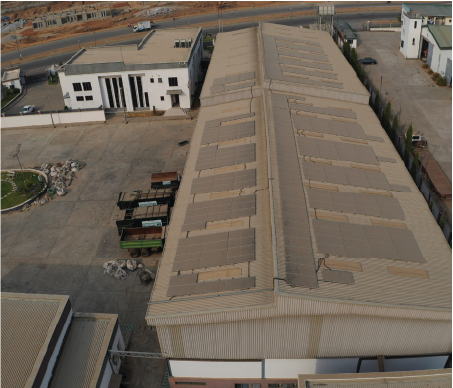Our Impact
SDG 7: Affordable and Clean Energy
Challenge
One of the major obstacles facing the recycling industry is the significant energy consumption required during various recycling processes. This high demand for energy often results in a reliance on nonrenewable-energy sources, which undermines the environmental benefits of recycling.
Additionally, the frequent collapses of the national power grid exacerbate this issue, as they lead to unreliable electricity supply from distribution companies. Without a stable and sustainable energy infrastructure, recycling operations face increased operational costs, reduced efficiency, and a greater environmental impact,ultimately hindering the effectiveness of recycling efforts.
Key Intervention
EEL implemented a 153-kilowatt peak (kWp) solar power system at its recycling facility. The integration of solar energy aimed to:
- Reduce dependence on fossil fuels and lower operational emissions.
- Ensure energy security, especially during grid failures.
- Improve cost-efficiency by reducing reliance on expensive diesel generators.

Outcome
- In 2023, the system generated 128,813.04 kWh of renewable energy.
- In 2024, this increased to 136,269.07 kWh due to improved energy storage integration.
- The shift to solar power resulted in a significant decrease in operational carbon emissions.
- Energy costs were reduced, improving the economic sustainability of operations
Lessons learned
- Renewable energy is a cost effective solution for long-term sustainability.
- Off-grid energy storage is critical for maintaining consistent operations during power outages.
- Future expansion of solar capacity requires an assessment of local solar energy potential.